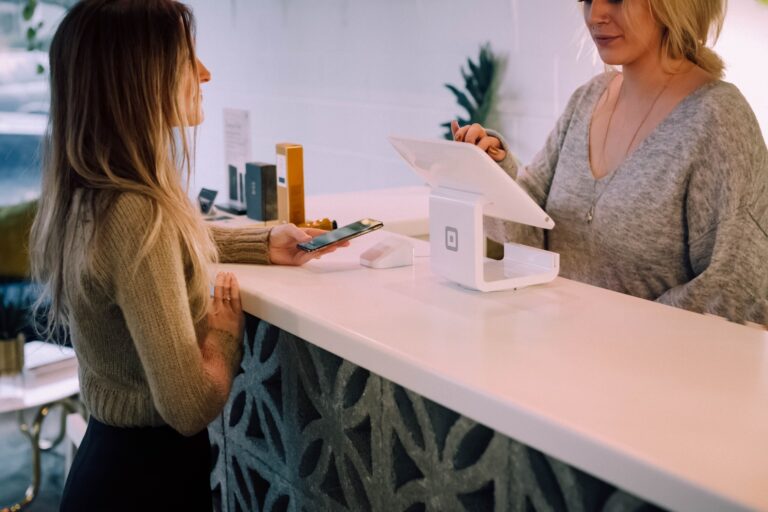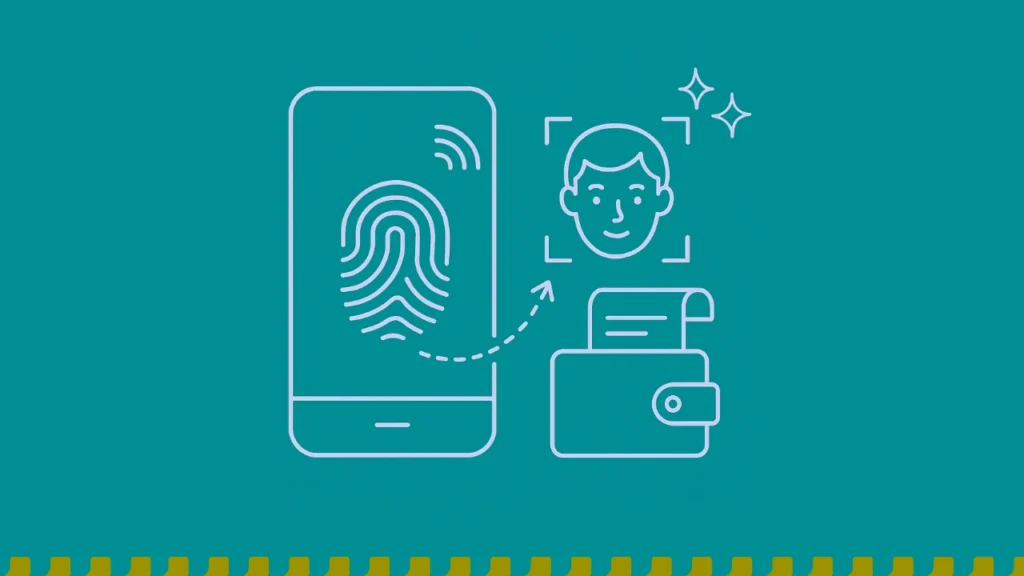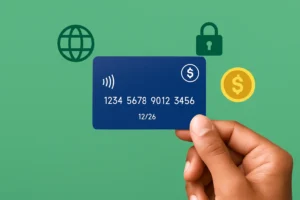In the ever-evolving landscape of contactless payments, the spotlight is now shining on biometric payments, adding a new layer of convenience to the user experience. Forget the days of fretting over misplaced ATM cards – your unique biological features are stepping up as the key to swift and secure transactions.
Businesses worldwide are embracing the seamless integration of biometric technology into payment confirmations, utilizing an array of recognition methods such as fingerprints, facial recognition, signature validation, and the intricate dance of retina/iris recognition.
But how do these cutting-edge systems operate, and what sets them apart in the realm of secure transactions?
In this article, the nitty-gritty of biometric payment technology will be discussed. And how it affects businesses.
So, let’s get to it.

What are Biometric Payments?
Biometric payments refer to a type of financial transaction authentication and authorization method that utilizes unique physical or behavioral characteristics of individuals to verify their identity.
Instead of using traditional methods like passwords, PINs, or cards, biometric payments rely on biological or behavioral traits, such as fingerprints, facial features, iris patterns, voice recognition, or even behavioral patterns like typing speed or gait.
The fundamental premise is to replace conventional authentication methods, such as PINs or passwords, with an individual’s inherent, and therefore virtually unforgeable, biological characteristics.
Gradually, the use of biometric payment verifications is increasingly becoming famous. As a business owner, it is needless for your customers to keep the memoirs of their complicated usernames and passwords.
Biometric payment is unique and peculiar to each individual.
5 Types of Biometric Payment Verification
Biometric payment is changing the course of making purchases by incorporating efficient biometric verification methods. These methods are known to ensure adequate security and are easy to use.
The known biometric authentication methods include:
1. Facial Recognition
Imagine your face becoming the password to your financial realm. Advanced facial recognition algorithms meticulously map the unique contours and features of your face, creating a secure gateway for transactions. A simple smile becomes the authentication seal, ushering in a new era of intuitive and secure payments.
2. Eye / Iris / Retina Recognition
The windows to your soul serve as gateways to secure transactions. Retina or iris recognition utilizes the intricate patterns of your eye to create a highly secure passphrase for accessing your financial assets.
3. Fingerprint Scanning
Fingerprint recognition relies on the intricate patterns of ridges and swirls, transforming your finger into an unparalleled identifier. With each transaction, the system interprets this personalized imprint, ensuring a secure and unmistakable link to your financial identity.
4. Voice Recognition
One modality that has gained significant prominence in the world of biometric contactless payments is voice recognition.
Picture a world where your spoken words become the key to unlocking secure transactions. This innovative technology harnesses the unique acoustic patterns of your voice, transforming it into a sonic signature for authentication.
5. Signature Recognition
In the digital tapestry of biometric payments, your signature takes on a new dimension. Signature validation captures the nuances of your pen strokes, transforming this traditional act into a digital confirmation of your identity.
Each stroke becomes a part of the dance, adding a personalized flair to every transaction.
Advantages of Biometric Payment
Biometric payment comes with a wide range of merits. Such advantage covers profound security, user-friendly experiences, and easy adaptability for every user.
The advantages have strategically positioned biometric payment authentication as an important tool for secured financial transactions around the world.
Enhanced Security
Biometric data is unique to each individual, significantly reducing the risk of unauthorized access or identity theft. Multi-modal biometric systems (fingerprint, facial, voice, etc.) provide layered security, making it challenging for fraudsters to compromise transactions.
Convenience and Speed
Biometric payments eliminate the need to remember passwords or carry physical cards, streamlining the authentication process. Transactions can be completed with a simple touch, glance, or spoken passphrase, enhancing the speed and ease of financial interactions.
Reduced Fraud
The dynamic nature of biometric data, coupled with anti-spoofing measures, makes it more challenging for fraudsters to replicate or forge access. Biometric systems continuously adapt and learn, staying one step ahead of potential security threats.
User-Friendly Experience
Biometric authentication is intuitive and natural, aligning with daily activities like touching, speaking, or looking at a camera. Users, especially those less comfortable with traditional authentication methods, find biometric payments more accessible and user-friendly.
Dynamic Adaptation to Users
Biometric systems dynamically adapt to changes in users’ biometric features over time. The technology remains effective even as individuals age or undergo natural changes in their biometric characteristics.
Lower Risk of Forgotten Credentials
With biometric payments, there’s no need to worry about forgetting PINs or passwords, reducing instances of failed transactions due to authentication issues. This lowers the frustration for users and enhances the overall reliability of the payment process.
Customizable Security Levels
Organizations can customize the security levels of biometric systems based on the sensitivity of transactions or user preferences. This adaptability ensures that the security measures align with specific needs and use cases.
Integration with Emerging Technologies
Biometric payment systems can seamlessly integrate with other emerging technologies such as artificial intelligence and machine learning, enhancing their effectiveness over time.
Continuous advancements in technology provide opportunities to refine and strengthen biometric payment systems.
Future-Proof Technology
As technology evolves, biometric payments, like other contactless payment methods – QR code payments, NFC payments, and contactless cards – can adapt and integrate new modalities or features, ensuring they remain at the forefront of secure transaction methodologies. The flexibility of biometric systems contributes to their long-term viability.
Disadvantages of Biometric Payment
All the advantages mentioned earlier notwithstanding, biometric payment has some points of concern. As an e-commerce business owner or one who sells digital products, you should know that adopting biometric payment verification methods demands you to strike a balance between security, policies, and technological reliability.
Note that if you can be detailed and proactive with your security measures, the disadvantages mentioned below will have little or no effect on your business.
Privacy Concerns
Biometric data is highly personal and raises data privacy concerns. Users may worry about the storage, sharing, or potential misuse of their biometric information.
Security Risks
While biometrics enhance security, they are not immune to hacking attempts. Stolen or compromised biometric data could lead to identity theft or unauthorized access.
High Implementation Costs
The initial setup and integration of biometric payment systems can be expensive, particularly for businesses or organizations with limited resources.
Inaccuracy and False Positives/Negatives
Biometric systems may occasionally produce false positives (incorrectly identifying an unauthorized user as authorized) or false negatives (failing to recognize an authorized user).
Lack of Standardization
The absence of standardized protocols for biometric data can lead to interoperability issues between different systems and devices.
Resistance to Adoption
Some users may be uncomfortable with the idea of providing biometric information, leading to resistance and reluctance to adopt biometric payment methods.
Physical Changes Affecting Accuracy
Physical changes to an individual’s biometric features (e.g., injury, surgery) could affect the accuracy of the system, necessitating updates and re-enrollment.
Vulnerability to Spoofing
Biometric systems, particularly those without robust anti-spoofing measures, can be vulnerable to spoofing attempts using forged fingerprints, voice recordings, or facial images.
Legal and Regulatory Challenges
Navigating the legal landscape around biometric data storage and usage can be complex. Compliance with data protection regulations adds a layer of challenge.
Limited Accessibility
In certain scenarios, individuals with physical disabilities or medical conditions affecting biometric features may face challenges in using biometric payment systems.
Data Breach Concerns
In the event of a data breach, the compromise of biometric data presents unique challenges, as unlike passwords, biometrics cannot be changed.
Technology Reliability
Technical issues, such as system malfunctions or errors in biometric data processing, can impact the reliability of biometric payment systems.
Learn how to set up contactless payments for businesses here.
How Does Biometric Payment Work?
In the intricate quest for secure transactions, biometric payments take center stage, turning the very essence of identity into a cryptographic key.
But how does this cutting-edge technology operate?
Let’s unravel the mechanics of biometric payments and explore the fascinating journey from unique biological features to seamless and secure financial transactions.
1. Enrollment: Capturing Your Unique Identity
The journey begins with the enrollment process. During this phase, users provide samples of their biometric data, depending on the modality chosen—be it fingerprints, facial features, voice patterns, or other distinctive traits.
These samples are meticulously analyzed and transformed into digital templates, creating a unique and personalized identifier for each individual.
2. Storage and Encryption
Once the biometric data is captured, it’s securely stored in databases. To fortify this sensitive information, robust encryption methods are employed.
This ensures that even if the data is intercepted, it remains unintelligible without the proper decryption key, adding an extra layer of security to the entire process.
3. Authentication
When a user initiates a transaction, the biometric system prompts for authentication. Here’s where the intricate ballet of biometric recognition takes center stage:
- Fingerprint Recognition: The user places their fingertip on a sensor, and the system matches the unique patterns against the stored digital template.
- Facial Recognition: Advanced algorithms map facial features, comparing them with the enrolled template to authenticate the user.
- Voice Recognition: The user speaks a passphrase or responds to a prompt, and the system compares the vocal characteristics with the stored voiceprint for verification.
- Other Modalities: Whether it’s retina/iris recognition or signature validation, each modality follows a similar process of comparing the captured data with the stored template for authentication.
4. Dynamic Adaptation
One of the remarkable features of biometric payments is their ability to adapt dynamically. Unlike static passwords, biometric data is inherently dynamic and can evolve.
Systems continuously learn and update the stored templates, ensuring reliable authentication even as the user’s biometric features naturally change.
5. Anti-Spoofing Measures
To thwart potential threats, biometric systems incorporate anti-spoofing measures. These measures detect and prevent unauthorized access attempts, such as the use of fake fingerprints or recorded voices, enhancing the overall security of the authentication process.
6. Transaction Authorization
Upon successful authentication, the user gains access to the desired financial transaction, whether it’s accessing accounts, making payments, or authorizing other financial activities.
The entire process, from enrollment to authentication, unfolds seamlessly, providing a secure and user-friendly experience.




